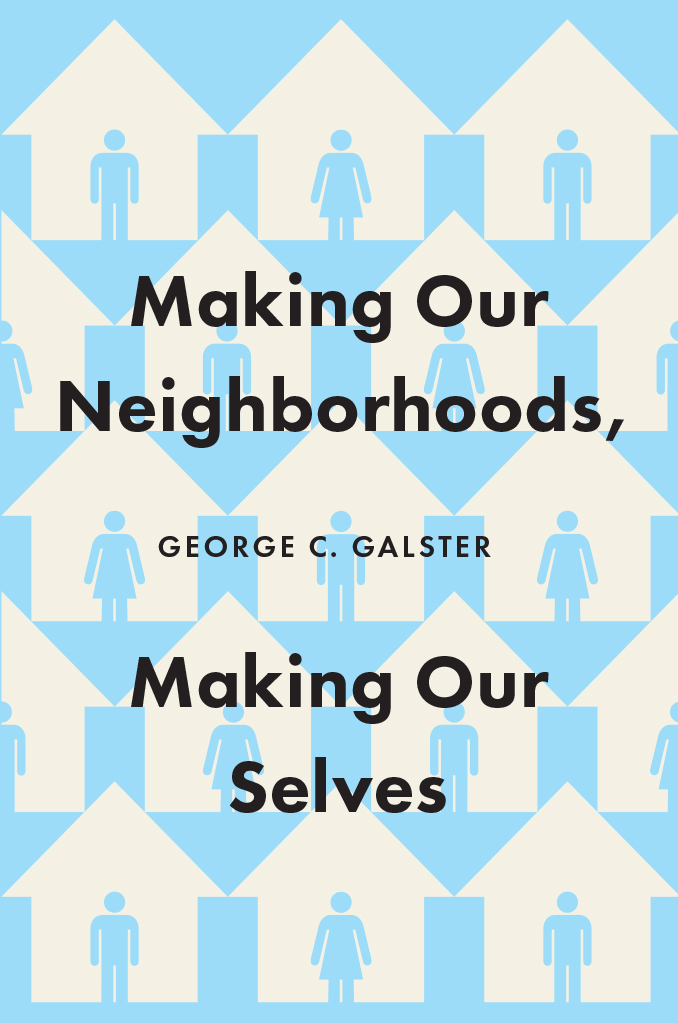
Making Our Neighborhoods, Making Our Selves
Making Our Neighborhoods, Making Our Selves
GEORGE C. GALSTER
The University of Chicago Press
Chicago and London
The University of Chicago Press, Chicago 60637
The University of Chicago Press, Ltd., London
2019 by The University of Chicago
All rights reserved. No part of this book may be used or reproduced in any manner whatsoever without written permission, except in the case of brief quotations in critical articles and reviews. For more information, contact the University of Chicago Press, 1427 E. 60th St., Chicago, IL 60637.
Published 2019
Printed in the United States of America
28 27 26 25 24 23 22 21 20 19 1 2 3 4 5
ISBN-13: 978-0-226-59985-4 (cloth)
ISBN-13: 978-0-226-59999-1 (e-book)
DOI: https://doi.org/10.7208/chicago/9780226599991.001.0001
Library of Congress Cataloging-in-Publication Data
Names: Galster, George C., 1948 author.
Title: Making our neighborhoods, making our selves / George C. Galster.
Description: Chicago ; London : The University of Chicago Press, 2019. | Includes bibliographical references and index.
Identifiers: LCCN 2018030679 | ISBN 9780226599854 (cloth : alk. paper) | ISBN 9780226599991 (ebook)
Subjects: LCSH: NeighborhoodsUnited States. | United StatesSocial conditions. | Sociology, UrbanUnited States.
Classification: LCC HT123 .G258 2019 | DDC 307.3/3620973dc23 LC record available at https://lccn.loc.gov/2018030679
 This paper meets the requirements of ANSI/NISO Z39.48-1992 (Permanence of Paper).
This paper meets the requirements of ANSI/NISO Z39.48-1992 (Permanence of Paper).
Portions of are reprinted from Neighborhoods and National Housing Policy: Toward Circumscribed, Neighborhood-Sensitive Reforms (Housing Policy Debate), which is forthcoming.
CONTENTS
Neighborhoods occupy an exalted position of importance for decision makers in virtually every realm of life: households, dwelling owners, business owners, public officials, mortgage lenders, and home insurers. Households believe that the neighborhood affects their quality of life and the future opportunities for their children, and they move accordingly if they can. Residential property owners, mortgage lenders, property insurers, and retail businesspeople believe that the neighborhood affects their risk-adjusted rates of financial return. Local public officials believe that the neighborhood affects the quantity, type, and quality of public services that citizens will demand, and the tax base that constrains the degree to which officials can meet these demands. The well-known adage about what is crucial in real estate summarizes all of these beliefs: Location, location, location.
Similarly, our public discourse is full of expressions that highlight the salience of neighborhoods in our everyday experience. Terms like decaying inner city, upscale quarter, black ghetto, slum area, ethnic enclave, gentrifying district, immigrant barrio, hipster village, and transitional zone are illustrative of how often we think about smaller-scale places within a broader metropolitan area.
An Epidemic of Myopia, and Hopefully a Cure
Because of its salience for so many, it is no wonder that the neighborhood has long been the focus of scholarly investigations. Indeed, during the last two score years dozens of significant books and hundreds of peer-reviewed journal articles have been published by economists, sociologists, political scientists, geographers, historians, and urban planners on issues related to the urban neighborhood.body of work has been plagued by myopia in five dimensions: topic, discipline, paradigm, geographic level, and causation.
Topically, prior scholarly works fall into three broad categories, each of which is important but ultimately incomplete. Those in the first category try to explain the drivers and unfolding processes of neighborhood changethat is, what affects neighborhoods.
In rare instances, a major scholarly work will address two or more of these three domains. Two recent and deservedly influential works by sociologists fall into this notable category. As I will demonstrate, the driver of neighborhood change is the housing market, which is metropolitan in scale yet establishes strong connections across local political jurisdictions and communities. A focus on the social processes within smaller geographies blinds us to larger external forces that impinge on what kind of people and what amount of money and other resources flow into any particular neighborhood, and what sorts of financial constraints limit the geographic alternatives for these crucial flows.
Unlike virtually all prior neighborhood scholarship, in this holistic analysis I attempt to be multidisciplinary in my approach, relying upon paradigms, concepts, and evidence from several social-scientific domains. In particular, from neoclassical economics I took as foundation the notion that in a capitalist society, markets generate price and profit signals that are the prime allocator of flows of self-interested people and rate-of-return-driven financial resources across metropolitan space. From geography, I relied upon the maxim that everything in space affects everything else in space, but more proximate things are more influential. From sociology, I drew upon the claims that stratification by race and class is a primary social fault line, that social context influences behavior, and that social and cultural distance matter as well as physical distance. From social psychology I learned that individuals construct their perceived reality in conjunction with interactions with others. From behavioral economics I drew the lesson that people do not always behave like fully informed, rational, maximizing Homo economicus, but instead often engage in informal intellectual heuristics based on wildly imperfect information. From developmental psychology, I distilled the essence not only of how proximal influences like family affect how children grow into adulthood, but of how distal influences like neighborhood and broader-scale contexts matter crucially as well.
As for paradigms, I am well aware that two competing schools of thought that fundamentally differ in their conception of archetypical humans have divided social science over at least the last half century. One school, associated with neoclassical economics and the rational choice school within political science, sees humans as fundamentally self-interested, atomistic decision makers who, on the basis of their predetermined preferences, make optimizing choices based on rational assessment of reasonably complete information. The other school, associated with sociology and social psychology, sees humans preferences, perceptions, and behaviors as being profoundly shaped by the social community in which they are embedded; they are often other-regarding, ill-informed, and irrational in the neoclassical sense. Both paradigms are incomplete; neither provides a fully satisfactory foundation for understanding neighborhoods as effects of and influences upon individuals, let alone a broader account of human behaviors in an urban milieu. I attempt in this book to stake out a common-sense middle ground between these extreme views. Individuals typically are self-interested in pursuing their goals, but they often exhibit other-regarding behaviors. Their social and physical contexts influence people in profound cognitive, perceptual, and behavioral ways; yet so do the financial constraints imposed by their own budget, in combination with the prevailing pattern of housing prices and rents set by the marketplace.
Next page
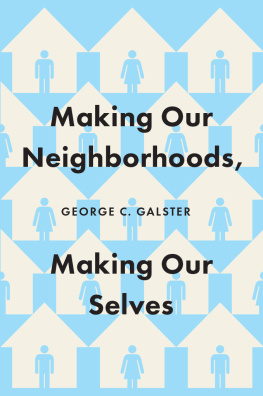

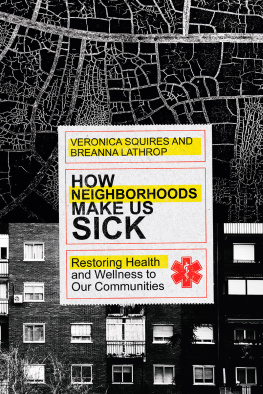
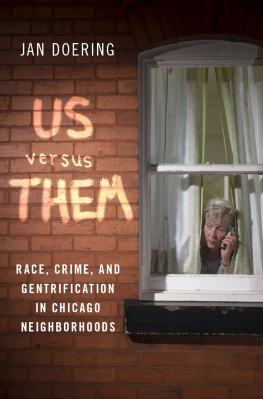
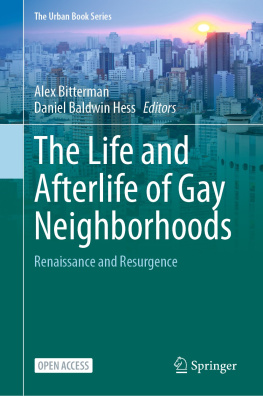
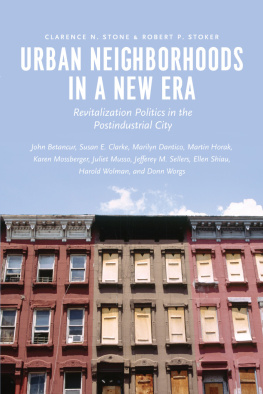

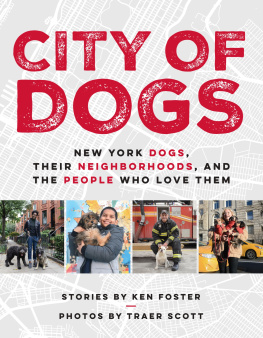

 This paper meets the requirements of ANSI/NISO Z39.48-1992 (Permanence of Paper).
This paper meets the requirements of ANSI/NISO Z39.48-1992 (Permanence of Paper).